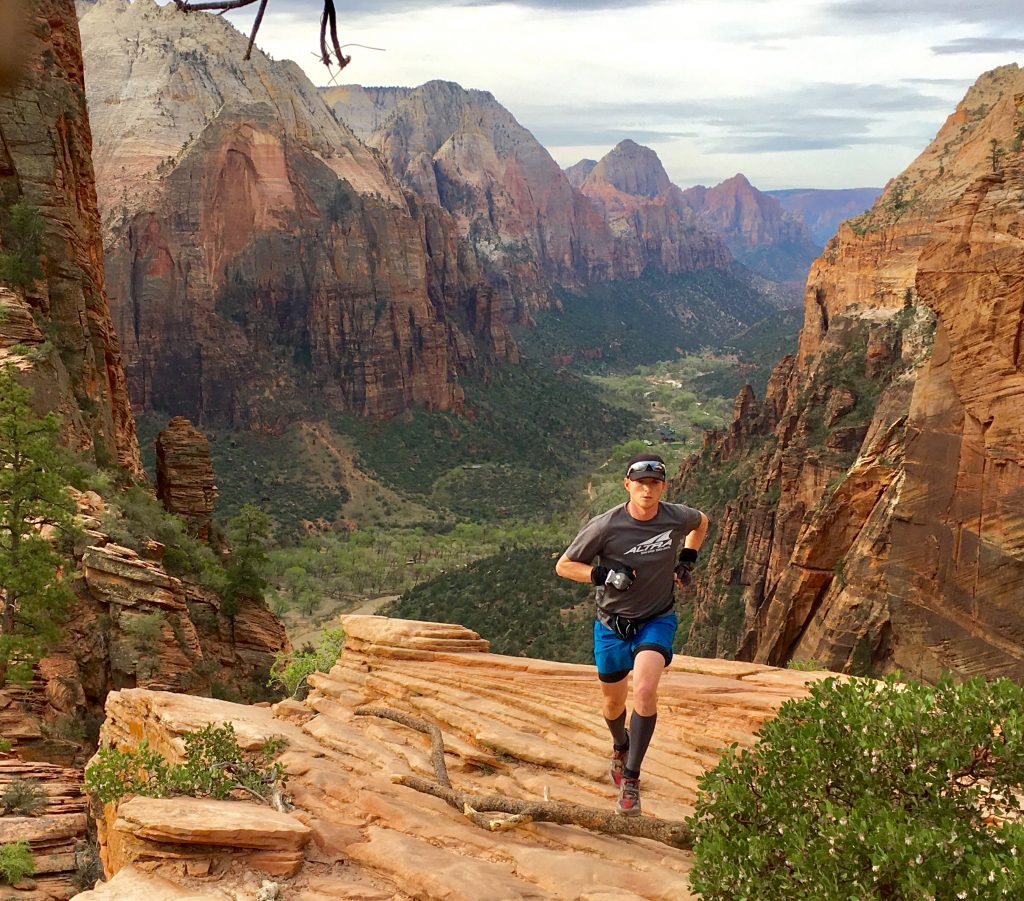
(Golden Harper/Altra)
BYU alumnus Golden Harper’s life has constantly centered on one thing: running.
From setting a world-record at the Saint George Marathon as a 12-year-old to various championships in high school and college, Harper has been running and training along with his family for years.
“I was the not-cool kid who showed up to kindergarten and was like ‘hey, where do you run?’ because I thought, we go run, our neighbors go run; that’s what people do,” Harper said.
He ran five marathons before turning 15 and then won two state high school cross country championships before winning a conference title at BYU-Hawaii.
After finishing his degree in exercise science at BYU in 2009, he returned to his family’s running store, where he helped out since age 9.
There, he said he and his father were constantly seeing friends and acquaintances return to the store with various foot and leg problems despite newer running shoe technology and a rise in popularity for running.
“Before shoes, everyone was running really well, for the most part,” Harper said. “Now, with all of this modern technology and these great, expensive running shoes that are supposed to reduce injury, 83 percent of people are not running well. If you look, injury rates are actually higher than they were back then.”
Wanting to help people enjoy the sport that he has for years, Harper set out to figure out what could be done.
With his father, they began to watch film of their customers running. In track spikes or barefoot, Harper said people would run really well.
Then they saw the same people in newer equipment run and essentially lose their form.
“My dad was like ‘I teach everybody that comes in here a lesson on how to protect their body when they run, and then the video makes it look like I sell them a pair of shoes that undoes everything I teach them every single time they go out,'” Harper said. “That’s a really frustrating moment, and so that was probably the biggest impetus for getting this thing started.”
After watching the film, Harper had two thoughts.
What if people’s heels were dropping and hitting the ground early because the shoe’s weight wasn’t equally distributed and the shoe itself was nearly twice as thick under the heel than under the forefoot?
With that in mind, he took a pair of shoes and using a toaster oven, modified it so the cushion under the heel would match the front.
“We actually sold a thousand pairs of modified, expanded toe box, cushioned zero-drop shoes in a year, which is a huge number of shoes,” he said.
Harper collected data from those who purchased the modified shoes, and the results were promising.
More people reported fewer problems and Harper knew this could revolutionize running shoes, if he could get someone to manufacture them.
As he approached major companies to test and incorporate the findings into their shoes, however, his appeals fell on deaf ears.
Harper said the companies were reluctant to modify their designs because it would show they’ve been wrong and for the last 20 years.
One company even said they would work toward implementing changes due to research such as Harper’s, but it would be a decades-long process to prevent consumers from realizing the changes.
Back in Utah, Harper was contacted by former Nike and Adidas employees after his pitches.
“My first thought was … I’m getting sued for modifying their shoes,” Harper said.
But it turned out the men had formed their own prototyping company and wanted to work with Harper, especially after hearing about the success he saw at his family’s store with the modified shoes.
“They wanted to build shoes right,” Harper said.
Their manufacturing expertise, combined with Harper’s in-store marketing background and emphasis on technique and equipment, led to the Altra Zero Drop running shoe.
The shoe is designed so the heel and forefoot are on the same level, which was a radically-different idea than the industry standard at the time.
Harper said trying an Altra shoe might feel weird because of the lower heel, but that it’s a good thing for one’s feet and health.
“We’ve helped put an emphasis on running technique, and that all stems around our cushioned, zero drop design,” Harper said.
He added that other shoe companies are improving and lowering the heel height, which is good for the industry as a whole.
“No longer is every single shoe twice as thick in the heel as the forefoot,” Harper said. “You see a lot of shoes with a wide variety of heel elevations.”
The toe box is another major part of the innovation.
“(If you) take off your shoe, and put your foot next to your shoe, you can see the shape of the shoe and the shape of the foot are two different things,” Harper said.
The box allows for better movement and less constriction on your toes and forefoot.
Put together, Harper’s focus on improving technique and foot-oriented shoes are helping people run better.
“We’re changing the industry (by) creating an awareness that chronic foot conditions are caused by shoes, and specifically the way shoes are built,” Harper said. “You’re starting to see companies at least have an awareness of that.”




